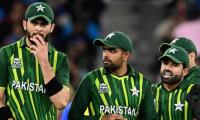My first memories of Rawalpindi as a young person are the long evening walks watching the sunset along the road. Now fifty years later, the city that has been my home its memories remain preserved even as the city has grown too much.
“I cannot forget the social structures in Rawalpindi’s historic core center on neighborhoods, each known as a Mohallah. A nearby bazaar serves each neighborhood. Each Mohallah has narrow streets, and the grouping of houses around short lanes and cul-de-sacs lends a sense of privacy and security to residents of each neighborhood,” says Musa Kazim.
“Rawalpindi is widely known as one of the livable cities. In recent years, my city has focused on road infrastructure projects for revitalizing the existing transport networks. With the city Corporation budget approval, long pending areas of concern need committed focus,” says Ali Akber.
“As a citizen, I feel these are several key areas, which stand ignored and need adequate attention. Vehicles take over footpaths meant for pedestrians. Not much has been done to develop footpaths, walkways, crossings, and pedestrian infrastructure,” says Faraj Mehdi.
“Just a year back Municipal Administration emphasized the right to walk and ordered the laying of new footpaths in each zone. However, nothing to this effect we witness on the ground. Crossing roads at many junctions is a nightmare as I experienced, with nonexistent or ill-planned crossings like bridges with no thought given to pedestrian safety,” says Sajid Ali.
“Removal of bins for implementing doorstep garbage collection, waste is seen piling up along some roads. This centralized waste collection system is not working well as envisaged and needs change to involve all stakeholders, including waste generators, to make it a success,” says Mazahir Hussain.
“Rapid urbanization has led to unchecked encroachments into connecting inlet and outlet drains disrupting the natural drainage system that leads to flooding in low-lying areas, even with a few hours of rain. When streets turn to river: Years of disregard for the environment and civic mismanagement become evident when extreme climate events occur,” says Naqash Abbas.
“Recently, a few drains have been spruced up with the creation of walking tracks and landscaping around it, but the exercise remains focused largely on beautification rather than improving the water flowing,” says Mohsin Haider.
“City buses, wagons, and Suzukis serve travelers. In recent years, the fleet size of city buses has gone down. The reduction in numbers has shrunk overall public transport usage. Perhaps, it is because of inflated petrol, gas, and diesel rates,” says Zair Hussain.
Shadman Raza says, “Transporters’ earnings have gone down therefore no new public transport is there. That shows the lackadaisical approach to public transport. With the economy opening up, a long-term vision for revival is necessary, for not only reducing dependence on private vehicles but also curtailing air pollution.”
Chairman PRCS Sardar Shahid Ahmed Laghari addresses at an event on August 12, 2024. —...
A representational image showing a person sitting on a wheelchair. — AFP/FileIslamabad : Pakistan Disabled...
This representational image shows a disabled child sitting in an electric wheelchair. — Unsplash/FileIslamabad :...
Representational image showing a woman working in an office. — AFP/FileIslamabad : S&P Global Pakistan announced the...
Representational image shows women taking pictures of paintings at an exhibition on November 16, 2024. —...
Participants pose for a group photo at the two-day international workshop on “Climate Change and Sustainable Water...







